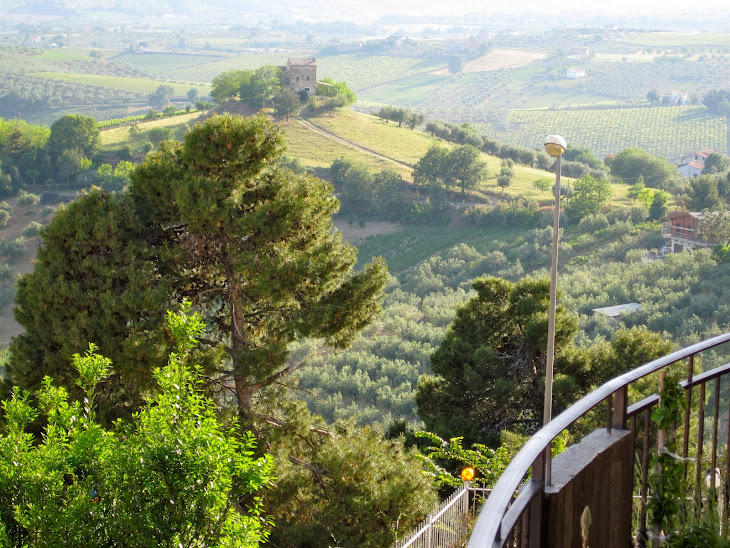Ripe coffee beans growing along a hiking path in the rainforest. This area of the rainforest has hundreds of trees from abandoned coffee plantations which were plentiful decades ago when Trinidad coffee was prized.
When they're red, they're ripe.
Then they're picked and put to dry in the sun. In two weeks the fruit is shelled to expose the coffee bean inside. Beans are then roasted in small batches and ground to make the morning cup of joe. My daughter's husband does this for their coffee regularly and has a secret roasting process for the best flavor!
Ripe cocoa pods on the tree. Trinidad was known world wide for its cocoa back in the early part of the 1900's. Abandoned cocoa trees still grow wild to the delight of young and old.
When they're yellow they're ripe.
When the pod is split open the beans are covered with a sweet, delicious white substance that can be sucked off one by one. It's a favorite treat on a hike. (This is my granddaughter who didn't want to be photographed but who loves cocoa pulp!)
If the pulp isn't sucked off it is put in a cedar box to sweat for five days as bacteria eats away the pulp leaving just the cocoa beans. The beans are then put dry in the sun for about a week. Great care is taken to keep them from getting wet in the inevitable rain. (They're more sensitive than coffee beans that can get wet, and dry and wet and dry again!) The cocoa beans are then roasted, shelled and broken into nibs which are eaten plain and bitter and considered a health food in this neck of the woods! Or they're ground into powder for baking or making hot cocoa. They can also be sold to fine chocolate makers here or abroad since Trinidadian cocoa is rated very highly internationally.
There's a growing movement among some Trini's to revive this old, potentially profitable industry.
It's all amazing to this girl from Boston who never knew any of these processes and now sees them right in her daughter's yard. I even helped spread the cocoa beans in the sun and pull them in quickly when it rained. They're done as of yesterday and bagged up for the next step on their way to chocolate.
I't a hands on, slower paced way of life that puts me in touch with the "behind the scenes" work of what we eat and drink.








http://thingsivefoundinpockets.blogspot.com/2010/02/we-need-several-square-meals-day-and.html
ReplyDeleteChocolate Taxes!
And thank you for sharing it with us. Experiences like these allow all of us to appreciate our food. What we get, the ready made to eat and hardly recognizable from it original form doesn't compare to the fresh experience your grandchild is getting.
ReplyDeleteNext time I'm in Trinidad (IF I ever get to go again) I'm going to make sure I get to see something like this myself. Thank you, Mary, for sharing.
ReplyDeleteI've never seen either coffee beans or cocoa still "on the bush." I'd love to come across that cocoa bean pod while hiking. We don't find too many of those in my neighborhood. Thanks for the post.
ReplyDeleteHow amazing to see both of these in the wild! They are so beautiful, those red berries, and that cocoa bean pod is a brand new thing to me. Thanks for educating me!
ReplyDeleteWhat a magical life for those children...and their Connecticut friends;)
ReplyDeleteHow very interesting....thanks so much for the insight!!! I love, love my morning coffee!!
ReplyDeleteNan, You know this place well.
ReplyDeleteRosaria, It does increase my appreciation but my grands take it for granted since it's all they've known.
Lou, This is the magical part of Trinidad.
Patti, It's amazing. And the sweet cocoa beans are such a treat.
DJan, I've leaned it all here. I had never seen it before either.
Lauren, Truly.
Nanny, Me too!